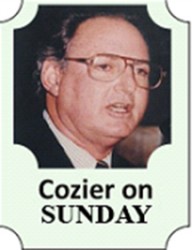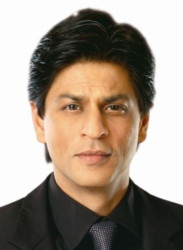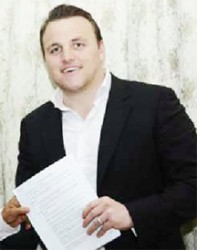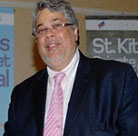Renowned for its passion for cricket and its penchant for revelry, there was no more appropriate location for a T20 tournament than the West Indies.

It has been an unqualified success on the field through its three seasons, the third of which ended at the Queen’s Park Oval in Port-of-Spain last weekend, with the Trinidad Red Steel defeating the 2014 champions Barbados Tridents in the final.
Two Trinidadian icons of T20 cricket were rival captains, Dwayne Bravo leading the Red Steel, Kieron Pollard the Tridents. The new champions included three South Africans and a Pakistani, the limit for overseas players for each team, along with a Bajan and six Trinidadians.
Hours before the first ball, stands were packed with an estimated 20,000 – there might have been more, there certainly weren’t less; they partied, as only Trinidadians can, as their franchise team, part owned for the first time by Bollywood superstar Shah Rukh Khan’s Kolkata Knight Riders of the IPL.
The red and black Trinidad and Tobago colours were everywhere. A sea of national flags waved non-stop, dozens of “sport’s hottest cheerleaders” gyrated as soca and calypso blared out from deafening speakers and drums beat a constant rhythm. The mayhem intensified at every Red Steel run or wicket.

At the end, Bravo, an IPL star, was surely the first captain in any format to take the mike and sing and dance to the latest hit in front of one of the stands. The irony of his choice as player of the tournament was not lost on those affronted by his dismissal from the West Indies team last January. There were similar scenes wherever the 32 matches were contested over the six weeks – Barbados, St. Lucia, St. Kitts, Jamaica, and Guyana. It was an antidote to the fans’ further despair at the simultaneous confirmation that West Indies had dropped below Bangladesh and Pakistan to ninth in the ODI rankings and so failed to qualify for the 2017 Champions League.

Such triumphs on the field were counterbalanced by stark economic and political realities off it. Damien O’Donohue, the chief executive, acknowledged that the West Indies is “a small economic region going through hard times”; it would “never be worth even a tiny fraction of the likes of the IPL”.
In an interview with ESPNcricinfo, he predicted “a move into profitable territory from next year”. Even then, he gave US$2-3 million annually as “a realistic goal”.
He spoke of other lucrative possibilities – some matches in Florida in CPL4 that would be a foot in the door of a sizeable, untapped market and increased investment from India to follow Shah Rukh Khan and the earlier takeover of the overall sponsorship by the Hero motor company.
A group of wealthy Indian businessmen out of Dallas already owned the Jamaica Tallawahs franchise; the first-time St. Kitts-Nevis Patriots were sold prior to the season to Uday Nayak, member of a successful business family in India, chairman and co-founder of the Veling aircraft leasing company based in Mauritius and St. Kitts.
Chief financial officer, Barrie Corcoran, put the cost of staging the tournament at US$25 million a season and revealed that the organization was “in debt in some parts”. To

offset it, investment from the relevant governments and private sectors was “important”.
The point was pressed earlier by O’Donohue and chief operations officer Pete Russell, a former English minor counties’ player. They complained to the media that Barbados was “a commercial disaster” since the government and private sector had “failed to come on board”, adding that they were prepared to pull out, if they received a good offer from “people knocking on our doors”.There was a strong and quick reaction. The region still has memories of a similar strategy by the International Cricket Council (ICC) leading into the 2007 World Cup.
In an editorial, the Nation newspaper said it was “surprised, even taken aback” by the comments.
“The reality is that, apart from certain concessions, most Caribbean countries cannot put the financing of the CPL ahead of the long list of national necessities already seeking a piece of the economic pie,” it wrote.
Tony Becca, the widely respected veteran cricket writer, made the same point in his weekly column in the Gleaner.
Yet, on the surface, statistics supplied by the CPL, through an independent report by SMG-Insight, the sports and sponsorship researchers, made a strong case for the Barbados and other governments putting up the annual US$1 million.
The CPL claimed that the report showed they had pumped “a massive” US$166 million into the various economies in 2014.
Yet Antigua-Barbuda had the plug pulled from the its Hawksbills franchise team after two years when the government baulked at the CPL’s requirements in spite of the stated return of US$13.8 million from three matches in 2014 ; it was moved to nearby St. Kitts as the St. Kitts-Nevis Patriots.
Grenada put up US$500,000 to stage the opening matches in 2014; its government didn’t bid again in spite of the US$13.3 million CPL said it gained from the venture.
The Barbados government seemed unimpressed with the figure of US$23.7 million given as input into the economy for 2014.
The change of governments in St. Kitts-Nevis and Guyana just before the 2015 tournament complicated the issue for the CPL.
The Minister of Sports in the new St. Kitts-Nevis government, Shawn Richards, charged the previous administration with leaving no budgetary support to host the Patriot matches. Even so, the contract, costing $7.25 million, would be honoured in five installments for 2015-19.
The clincher seemed the realization of the likely fallout from a public excited at having its own franchise team rather than the overall benefits listed by the CPL.
A few weeks later, a new government also came to office in Guyana.
Presented with an invoice of US$500.000 from the CPL for its input over the previous two years, finance minister Winston Jordan said it would not be paid until his office saw contracts and other official documents concerning the matter.
Minister of State Joseph Harmon regretted “the ad hoc manner” of the previous government’s dealings with the CPL. The usual exemptions and concessions for staging international cricket in Guyana would be granted. He reportedly told O’Donohue “This time round, things will be done differently.” In other words, negotiations would be opened with the CPL only after what he termed a structured, legally sound, cabinet approved agreement was in place. The moment had come for damage limitation.
After the CPL committee met with government, Russell said what differences there were had been sorted out. Stating that government had done “the right thing” by carrying out due diligence, he was confident CPL would “a major factor in Guyana… for years ahead”. Time will tell.
After the Red Steel had collected its trophy and champions’ cheque following the final, the Trinidad and Tobago Prime Minister, Kamla Persad-Bissessar, pledged on-going support of the tournament. Head of the Trinidad and Tobago Cricket Board (TTCB) Azim Bassarath responded with a plea for her government to funding a US$5 million development plan, involving all aspects of the game.
“If there are no cricketers who we develop and cultivate day in and day out, they would be no finished product to sell to the CPL,” Bassarath argued.
It was a reasonable point.





